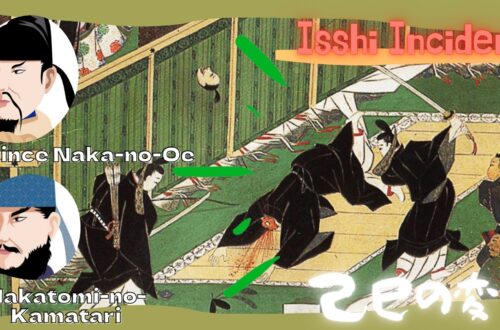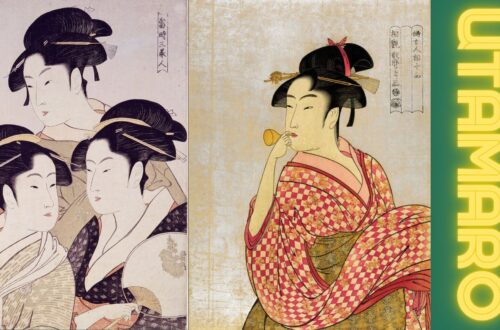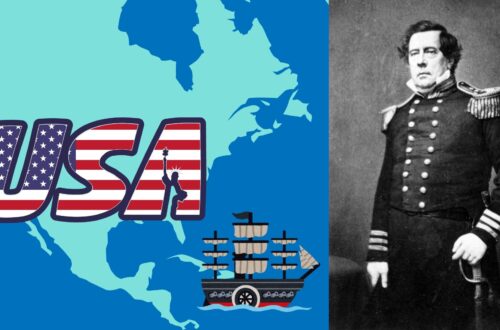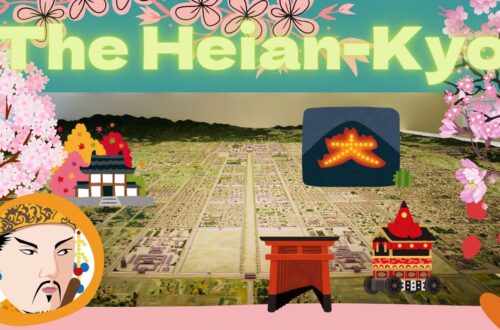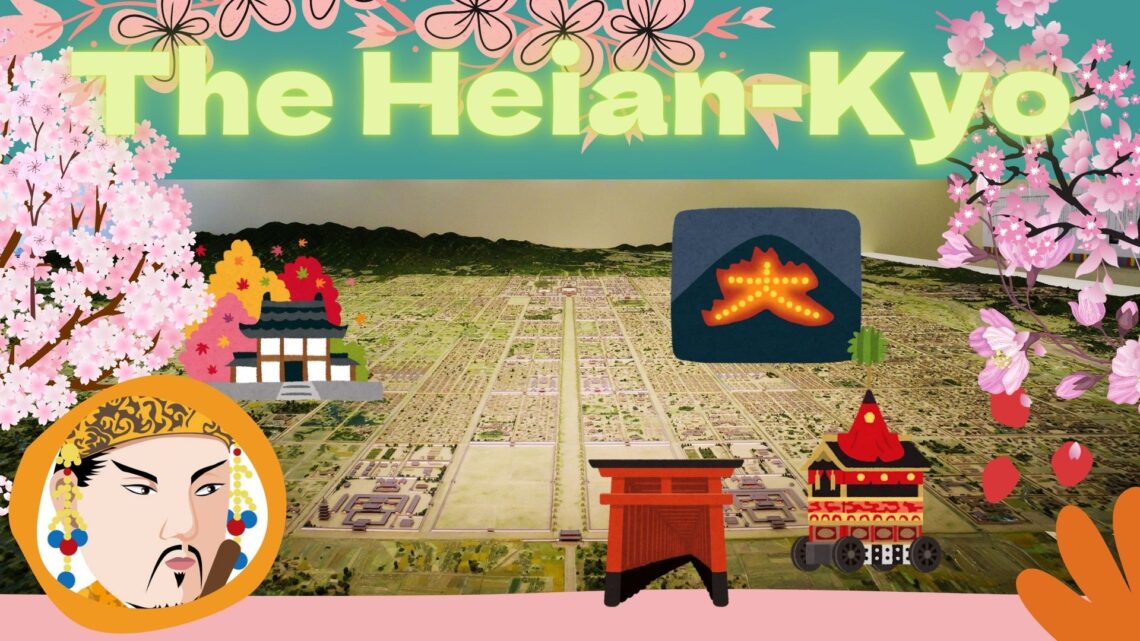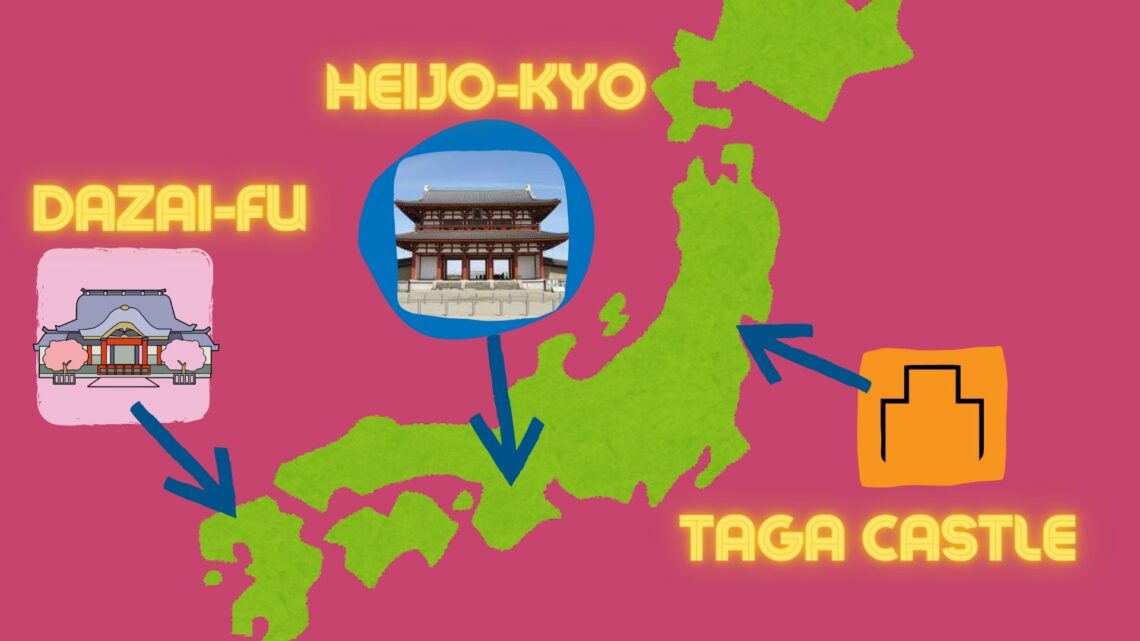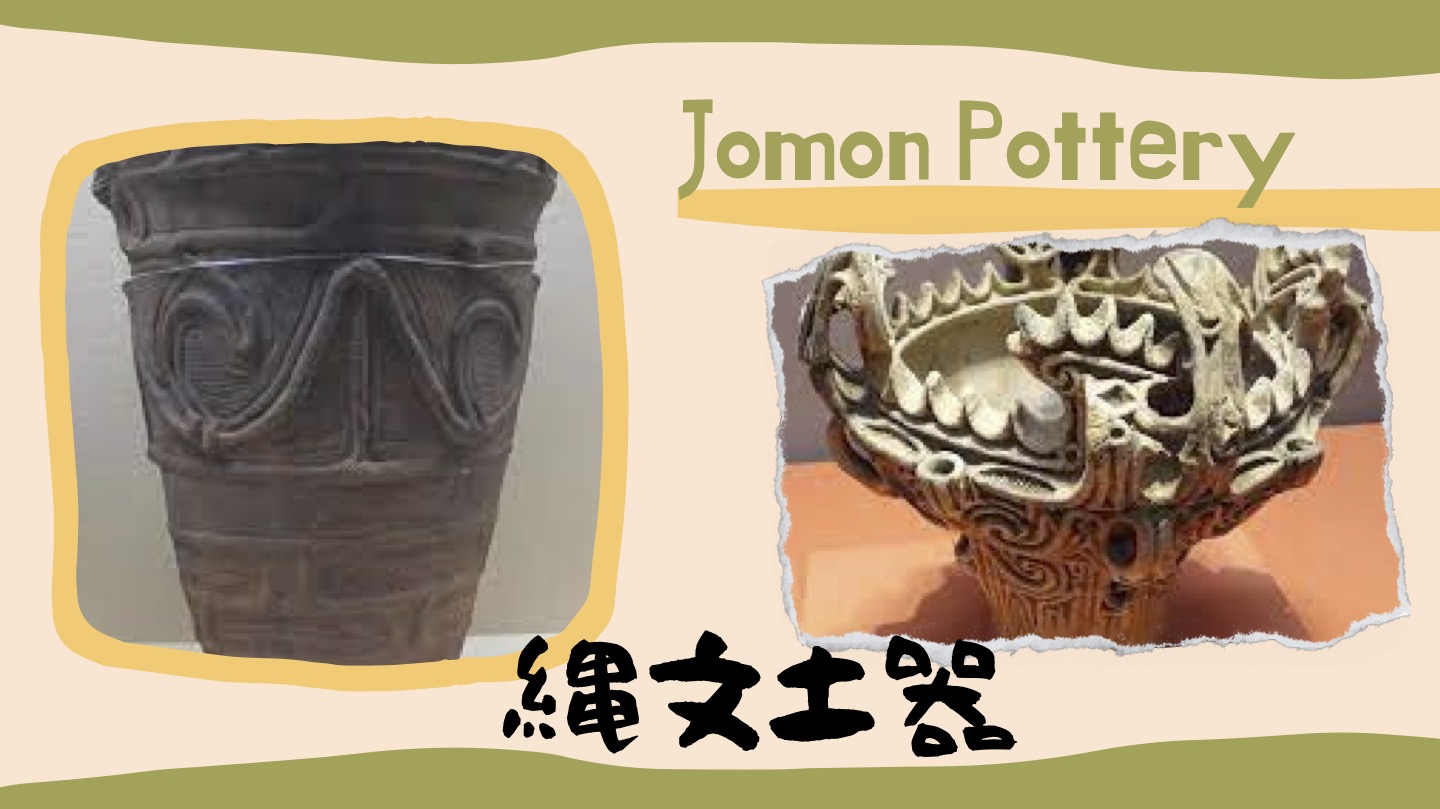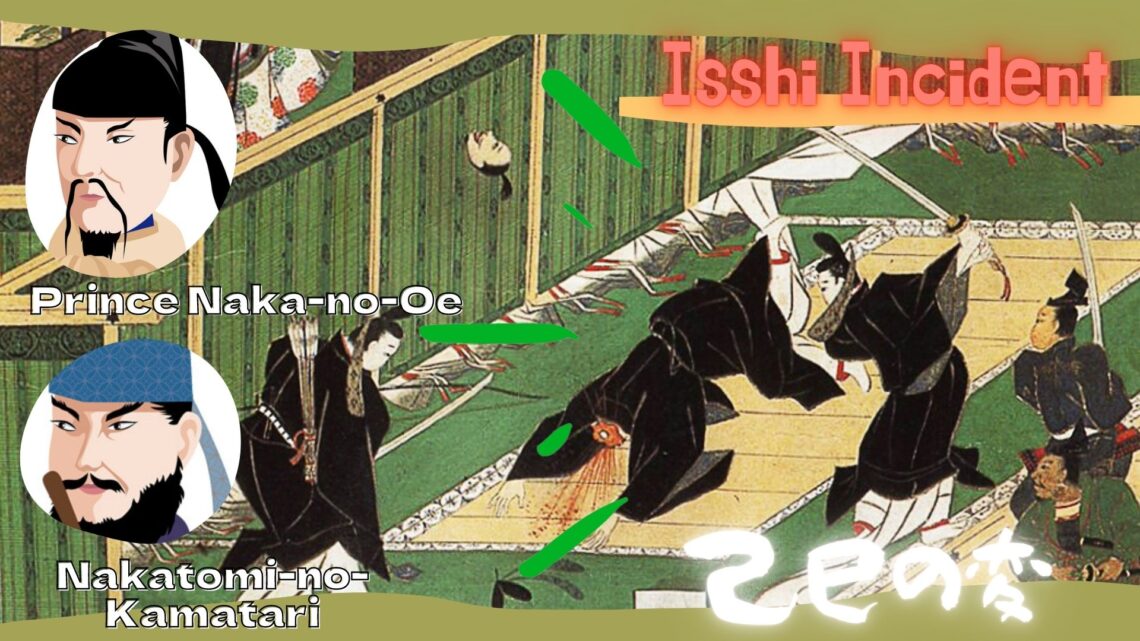01 Japanese History
A brief summary of Japanese history in 3 minutes. The videos are available on You Tube.
-
#19 The Sengoku Period
Click here to go to the YouTube video This Episode 19 is about the Sengoku Period. For about 100 years, Warlords fought each other all over the country. 19回目は戦国時代についてです。およそ100年間、日本中で武将たちが戦った時代です。 In the 15th century, the people repeatedly revolted, and there was a widespread movement to force the shogunate and local feudal lords to recognize their demands. 15世紀になると民衆が繰り返し反乱を起こし、幕府や各地の大名に自分たちの要求を認めさせる動きが広まりました。 The power of the Muromachi Shogunate in Kyoto weakened, and a trend of “Gekokujo,” in which a lower-ranking person overcame a higher-ranking person by force and took his position, spread throughout society. 京都の室町幕府の力が弱まり、下位の者が上位の者に実力で打ち勝ち地位を奪う「下剋上」の風潮が社会全体に広まっていったのです。 In Kyoto, the Onin War broke out in 1467 over the succession of the shogun. The war lasted more than 10…
-
#18 Pirates of the East
Click here to go to the YouTube video In this Episode 18: The Pirates of the East, we will look at trades in East Asia around the 14th and 15th centuries. エピソード18は「東アジアの海賊」です。14から15世紀の東アジアの貿易の様子をみてみましょう。 In the 14th century, pirates known as “Wako“, became active. Using islands in Nagasaki as their bases, they smuggled goods in and out of Japan and attacked the Korean Peninsula and the coast of China. 14世紀には「倭寇」として知られる海賊の活動が活発になりました。長崎の島々を拠点として密貿易をしたり、朝鮮半島や中国沿岸を襲ったりしました。 At first, Wako was mainly Japanese, but later Chinese and Korean pirates became the main players. They were large armed forces and became pains in the neck to the Ming and Korean governments. In China, Zhu Yuanzhang founded the Ming Dynasty and…
-
#17 Two Imperial Courts
Click here to go to the YouTube video This episode is about the period of two Imperial Courts. The Kamakura Shogunate had fallen and the country was in turmoil. 今回は2つの朝廷の時代(南北朝時代)についてです。鎌倉幕府が崩壊し、混乱の時代となりました。 After winning the battles against Yuan, the dissatisfaction of many samurais against the government increased because the Kamakura shogunate could not provide sufficient rewards to the warriors. 元との戦いに勝利した後、十分な恩賞を与えない鎌倉幕府に対する武士たちの不満が高まりました。 In Kyoto, Emperor Godaigo was looking for a chance to overthrow the Kamakura Shogunate. With the cooperation of influential warriors like Ashikaga Takauji, Nitta Yoshisada, and Kusunoki Masashige, Emperor Godaigo succeeded to destroy the Kamakura Shogunate in 1333. 京都では後醍醐天皇が鎌倉幕府打倒のチャンスを伺っていましたが、足利尊氏、新田義貞、楠木正成などの有力な武士たちの協力を得て、1333年、鎌倉幕府の打倒に成功しました。 Emperor Godaigo started a new emperor-centered government in Kyoto. His political reform is…
-
#16 The Mongol Invasions
Click here to go to the YouTube video This episode is about The Mongol Invasions. Let’s look at how the Kamakura Shogunate responded to foreign invasions. 今回のテーマは元寇です。鎌倉幕府はその危機にどう対応したのでしょうか。 At the beginning of the 13th century, Genghis Khan established the Mongol Empire. The Mongol Empire established a cavalry army and ruled over a vast area that straddled the Eurasian continent. 13世紀はじめ、チンギス・ハンがモンゴル帝国を建国しました。モンゴル帝国は騎馬隊を組織しユーラシア大陸にまたがる広大な地域を支配しました。 Genghis Khan’s grandson, the fifth emperor, Kublai Khan, conquered China and founded the Yuan Dynasty. After conquering the Koryo Dynasty on the Korean peninsula, Kublai also attempted to subjugate Japan. チンギス・ハンの孫で5代皇帝のフビライ・ハンは中国を征服し元王朝をたてました。フビライは朝鮮半島の高麗を征服した後、日本にも服属を求めてきました。 Envoys from Kublai came to Japan several times. At that time, the head of the Kamakura shogunate was Hojo Tokimune.…
-
#15 The Kamakura Culture
Click here to go to the YouTube video This episode is about Kamakura Culture. Let’s take a look at what kind of culture was born in the Kamakura period. 今回のエピソードは鎌倉文化です。鎌倉時代にはどのような文化が生まれたのか見ていきましょう。 Nandaimon Gate of Todaiji Temple is a building representative of the Kamakura Culture. Todaiji Temple in Nara was burned down during the Genpei War but was rebuilt with donations from warriors and the people. The Kongorikishi statues were installed in this Nandaimon Gate. The artists were Unkei and Kaikei. The statues express the strength that flourished in the samurai spirit. 東大寺南大門は鎌倉文化を代表する建築物です。奈良の東大寺は源平合戦の間に焼かれましたが、武士や民衆の寄付により再建されました。この南大門には金剛力士像が設置されています。作者は運慶と快慶です。この像には武士の気風を反映しした力強さが表されています。 In the field of literature, the military chronicle “The Tale of the Heike” was created. It was sung by…
-
#14 The Jokyu War
Click here to go to the YouTube video This episode is about the Jokyu War. After the death of Minamoto no Yoritomo, the Kamakura Shogunate was plunged into crisis. 今回は承久の乱についてです。源頼朝の死後、鎌倉幕府は危機に陥りました。 After Yoritomo’s death, his children were appointed as the second and third shoguns. However, both were assassinated amid political turmoil, and Yoritomo’s bloodline was cut off. 頼朝の死後、その子どもたちが2代目と3代目の将軍となりましたが、政治的混乱の中で二人は暗殺されてしまいます。そして頼朝の血筋は途絶えました。 In Kyoto, Joko Go-Toba sought to reassert the power of the Imperial Court. When the Minamoto shoguns ceased to exist, Joko Go-Toba sent an army to Kamakura to overthrow the Shogunate. The warriors of the Kamakura Shogunate were unsettled. 京都では、後鳥羽上皇が朝廷の力を回復しようとしていました。源氏の将軍が途絶えると、後鳥羽上皇は幕府を倒そうと鎌倉に兵を送りました。幕府の侍たちは動揺しました。 At this time, the real power of the shogunate was in the hands…
-
#13 The Kamakura Shogunate
Click here to go to the YouTube video The theme of this episode is the establishment of the Kamakura shogunate. After winning the battle against the Taira clan, the Minamoto clan established a samurai government in Kamakura. 今回のテーマは鎌倉幕府の成立です。平氏との戦いに勝利した後、源氏が鎌倉に武士の政権を樹立しました。 After the fall of the Taira clan in 1185, Minamoto no Yoshitsune, a war hero, became a popular figure at the Imperial Court in Kyoto. Minamoto no Yoritomo, who was trying to set up a political system in Kamakura, opposed Yoshitsune. Yoritomo pressured the Imperial Court and obtained the right to place “Shugo” and “Jito” to capture Yoshitsune. 1185年に平氏が滅ぶと、源義経はいくさの英雄として京都の朝廷でもてはやされました。鎌倉で政治基盤を固めようとしていた源頼朝は義経と対立しました。頼朝は朝廷に圧力をかけ、義経をとらえる目的で「守護」と「地頭」をおく権利を獲得しました。 “Shugo” was a position that Yoritomo placed in each province. They were in…
-
#12 The Rise & Fall of The Taira Clan
Click here to go to the YouTube video The theme of this topic is the rise and fall of the Taira clan. Let us look at how the samurai era began. 今回のテーマは平家の盛衰です。サムライの時代がどのように始まったのか見ていきましょう。 From the middle of the 11th century, the emperors had an active movement to regain power from the aristocratic Fujiwara clan. Emperor Go-Sanjo was not closely related to the Fujiwara. He organized the manors and took control of the public domain. And it damaged the aristocrats. 11世紀の半ばから、天皇家は貴族の藤原氏から力を取り戻そうとします。後三条天皇は藤原氏との関係が薄く、荘園や公領を整理し、貴族にダメージを与えました。 The next emperor, Shirakawa, gave up the imperial throne to his young son and became a “Joko”, or retired emperor. It allowed him to govern freely. This was called “Insei”, or…
-
#11 The Emergence Of The Samurai
Click here to go to the YouTube video The topic of this time is the emergence of the samurai. How did the samurai gain power in the aristocrat-centered Heian period? 今回のトピックは武士の登場です。貴族中心の平安時代、武士はどのように力をつけていったのでしょうか。 In the 10th century, as the Ritsuryo system loosened, local politics changed. Provincial governors rode horses and armed themselves to collect taxes, and peasants and wealthy families also armed themselves to oppose them. 10世紀、律令制度がゆるむにしたがい、地方の政治は変わりました。国司は馬に乗り、武装して税を取り立て、農民や豪族も武装して国司に対抗するようになりました。 In the capital, the Imperial Court recruited low-ranking nobles and others as military officers and put them in charge of guarding the capital as samurai. In this way, warriors specializing in the martial arts were born, and gradually a group of warriors led by a…
-
#10 The Kokufu Culture
Click here to go to the YouTube video The theme of this time is The Kokufu Culture. What kind of culture flourished during the Heian period? At the end of the 9th century, as the power of the Tang Dynasty waned, the 260-year-long Tang Dynasty envoys were abolished in 894 at the suggestion of Sugawara-no-Michizane, then a close aide to Emperor Uda. Sugawara-no-Michizane was a scholarly elite who became the right minister of the Imperial Court. He was loved by the emperor, but due to a conspiracy by the Fujiwara clan, he was moved to Dazaifu, far from the capital, where he died. The nobles of the Imperial Court feared…
-
#09 Saicho & Kukai
Click here to go to the YouTube video In 804, the 16th Japanese envoy to the Tang Dynasty was dispatched. Among them were two geniuses who would shape the future of Buddhism in Japan. They were Saicho and Kukai. Saicho was born in Omi Province (present-day Shiga Prefecture). After training in the rugged mountains of Tang China, Saicho returned to Japan. He entered the Enryaku-ji Temple on Mount Hiei, and he founded the Tendai sect of Buddhism. Kukai was born in Sanuki Province (present-day Kagawa Prefecture). He studied the latest Buddhism in Chang’an, the capital of the Tang Dynasty. After returning to Japan, he built the Kongobu-ji Temple on Koyasan…
-
#08 The Heian Period
Click here to go to the YouTube video This time, let’s take a look at the Heian period. The Heian period is about 400 years from the time the capital of Japan was moved to Kyoto until the establishment of the samurai government in Kamakura. In Nara’s Heijo-Kyo Capital, there was a power struggle between aristocrats and monks. Emperor Kammu decided to move the capital in an attempt to reorganize the government. He moved the capital to Nagaoka-Kyo in 784, and then in 794, he built Heian-Kyo in present-day Kyoto. The capital of Japan was Kyoto until 1868 when it was moved to present-day Tokyo. Emperor Kammu appointed Sakanoue-no-Tamuramaro as…
-
#07 Tenpyo Culture
Click here to go to the YouTube video Japanese envoys to the Tang Dynasty were frequently sent to China to introduce advanced systems and culture to Japan. It was during this period that the famous Buddhist monk, Jianzehn, or Ganjin, came to Japan with great difficulty and introduced the precepts of Buddhism. The Nara period was a time of epidemics, earthquakes, and famine. Consequently, the smallpox epidemic that started in 735 was thought to have killed about 30% of the population. Emperor Shomu decided to protect the country with the power of Buddhism, and he built Kokubunji temples across the country and the huge Todaiji Temple in the capital, Heijokyo.…
-
#06 The Nara Period
Click here to go to the YouTube video Once the Ritsuryo system was in place, the government built a new capital called the Heijo-kyo in Nara. The 74 years that Heijo-kyo was the capital of Japan, starting in 710, are known as the Nara period. From Heijo Palace, where the emperor resided, a 70-meter wide Suzaku-Oji road ran north to south, dividing the capital into east and west. Markets were set up on the east and west sides, and goods brought from various places were bought and sold using coins. The wooden tablets excavated from the Heijo Palace site show how people lived in those days. Roads connecting the capital…
-
#05 The Taika Reform
Click here to go to the YouTube video Let’s take a look at how the Yamato government aimed to become a centralized state amid the turbulent situation in East Asia. In 618, the Tang Dynasty unified China and created a powerful empire. On the Korean Peninsula, there were three countries: Koguryo, Silla, and Baekje. When the Tang Dynasty began to attack Goguryeo, the situation in East Asia became tense. The Yamato government received information about the international situation from students and monks who returned from China and decided to reform its domestic politics and to create a strong centralized state. However, to carry out this reform, it was necessary to…





